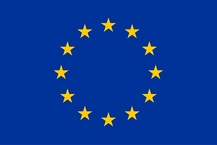Informationstechnik - Sicherheitsverfahren - Verschlüsselungsalgorithmen - Teil 2: Asymmetrische Chiffren Information technology - Security techniques - Encryption algorithms - Part 2: Asymmetric ciphers
Informationstechnik - Sicherheitsverfahren - Verschlüsselungsalgorithmen - Teil 2: Asymmetrische ChiffrenInformation technology - Security techniques - Encryption algorithms - Part 2: Asymmetric ciphers |
| Shortname | ISO/IEC 18033-2:2006-05 |
|---|---|
| Dokumentnummer | 18033-2 |
| Ausgabedatum | 2006-05-00 |
| Erwerb bei | https://www.vde-verlag.de/iec-normen/213871/iso-iec-18033-2-2006.html |
| Internationales Gremium | ISO/IEC JTC 1/SC 27 |
| Thema | Algorithmen , Sicherheitsverfahren , Verschlüsselung |
| Sektor | Informationstechnik und Telekommunikation |
| Branche | Informationstechnik |
| Level of Abstraction | 1 |
- Einführungsbeitrag (short) EN:
ISO/IEC 18033-2:2006 specifies encryption systems (ciphers) for the purpose of data confidentiality. The primary purpose of encryption (or encipherment) techniques is to protect the confidentiality of stored or transmitted data. An encryption algorithm is applied to data (often called plaintext or cleartext) to yield encrypted data (or ciphertext); this process is known as encryption. The encryption algorithm should be designed so that the ciphertext yields no information about the plaintext except, perhaps, its length. Associated with every encryption algorithm is a corresponding decryption algorithm, which transforms ciphertext back into its original plaintext. An asymmetric, i.e. public-key, encryption scheme allows a sender to use a recipient's public key to transmit an encryption of a message to the receiver, who can use his secret key to decrypt the given ciphertext, thereby obtaining the original message. Such a scheme should be secure in the sense that no information about the message should be leaked to a (resource-bounded) attacker, even if that attacker mounts a so-called 'chosen ciphertext' attack, in which he may obtain decryptions of other ciphertexts. This is the strongest type of attack that has been proposed for a public-key encryption scheme. ISO/IEC 18033-2:2006 specifies the functional interface of such a scheme, and in addition specifies a number of particular schemes that appear to be secure against chosen ciphertext attack. The different schemes offer different trade-offs between security properties and efficiency.
- Anmerkung:
Geändert durch ISO/IEC 18033-2 AMD 1 (2017-11)
- ISO/IEC 10118-2 (2000-12)
- ISO/IEC 10118-3 (2004-03)
- ISO/IEC 18033-3 (2005-07)
- ISO/IEC 9797-1 (1999-12)
- ISO/IEC 9797-2 (2002-06)
-

Transnational Branche: Informationstechnik
Ergebnis 46RICHTLINIE (EU) 2018/1972 DES EUROPÄISCHEN PARLAMENTS UND DES RATES vom 11. Dezember 2018 über den europäischen Kodex für die elektronische KommunikationRL (EU) 2018/1972
Einzelne Vorschriften
Art. 40, 41

Transnational Branche: Informationstechnik
Ergebnis 47RICHTLINIE 2014/30/EU DES EUROPÄISCHEN PARLAMENTS UND DES RATESvom 26. Februar 2014 zur Harmonisierung der Rechtsvorschriften der Mitgliedstaaten über die elektromagnetische VerträglichkeitRL (EU) 2014/30
Einzelne Vorschriften
Art. 2; 3; 7; 9; 10; 11; 18

Bundesrecht Branche: Informationstechnik
Ergebnis 48Gesetz zum Schutz von GeschäftsgeheimnissenGeschGehG
Einzelne Vorschriften
§§ 1; 4; 7; 23

Bundesrecht Branche: Informationstechnik
Ergebnis 49Gesetz über die Bereitstellung von Funkanlagen auf dem Markt (Funkanlagengesetz)FuAG
Einzelne Vorschriften
§§ 4; 5; 7; 9; 12; 14; 25

Transnational Branche: Informationstechnik
Ergebnis 50Richtlinie (EU) 2019/771 DES EUROPÄISCHEN PARLAMENTS UND DES RATES vom 20. Mai 2019 über bestimmte vertragsrechtliche Aspekte des Warenkaufs, zur Änderung der Verordnung (EU) 2017/2394 und der Richtlinie 2009/22/EG sowie zur Aufhebung der Richtlinie 1999/44/EGRL (EU) 2019/771
Einzelne Vorschriften
Art. 7 III, 8 lit. b, 10
